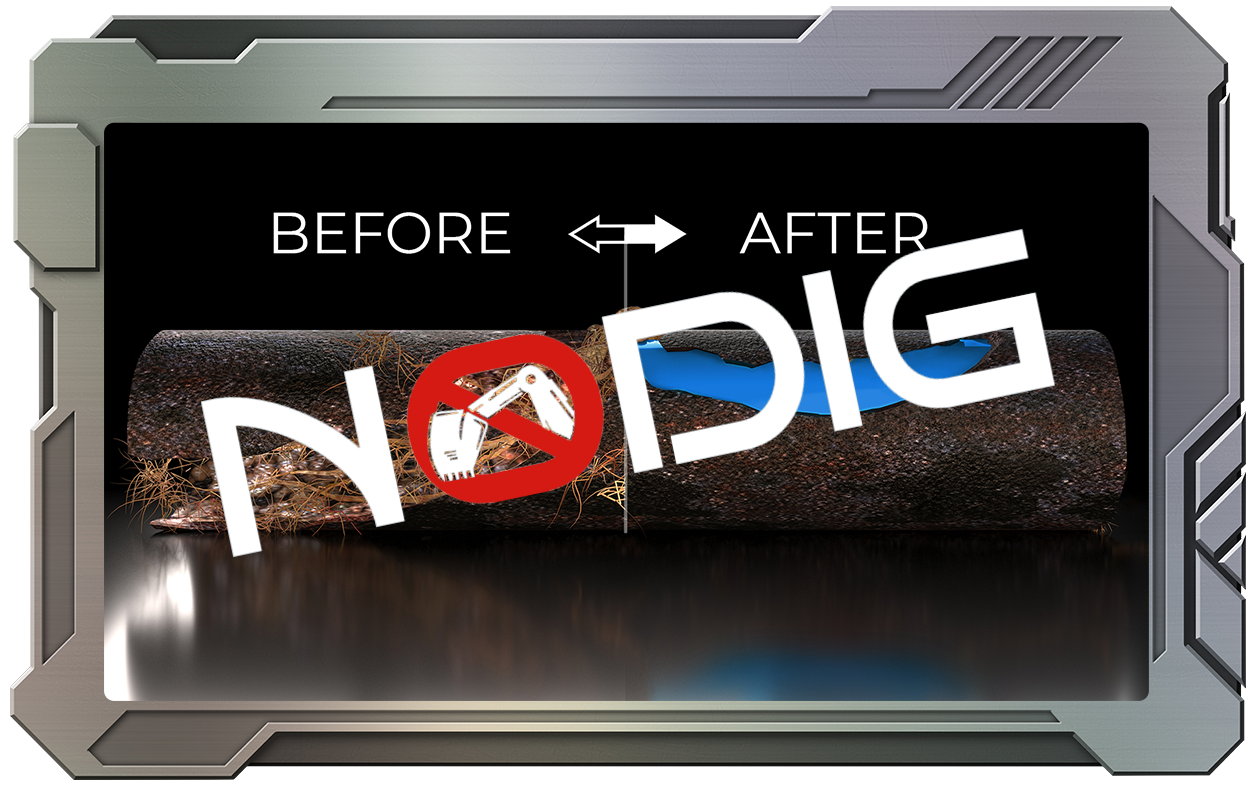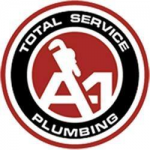Trenchless technology is one of the best construction methods for accessing existing buried pipes while protecting environmentally-sensitive areas.
It's a method that offers minimal disruption to daily affairs.
Let's go deep beneath the surface and discuss what trenchless technologies are and what they offer.
We'll look at the benefits of such construction methods and review the different types of minimal excavation construction.
What Is Trenchless Technology?
Trenchless technology is a series of construction methods that offer underground infrastructure replacement, repair, and rehabilitation with minimal disruption to activities occurring on the ground surface.
This type of no-dig construction is often done by creating a small vertical hole, then performing horizontal directional drilling, horizontal auger boring, or tunneling with a tunnel boring machine to reach underground pipes.
Such construction methods allow workers to access sewer lines with minimal excavation. Thanks to trenchless technology, they can even repair a defective pipe without tearing it out of the soft ground.
Trenchless construction is thus much better than creating open trenches, as you will not be disturbing surface traffic, local residences, and businesses.
Pipelines can be improved with no or minimal disruption to daily life.
The North American Society for Trenchless Technology (NASTT) is the primary organization responsible for creating awareness and encouraging trenchless construction over other methods.
Where Is Trenchless Technology Used?
Trenchless technologies are now being used to repair, replace and install all existing utilities that require preserving the ground surface at all costs.
These underground infrastructure projects include sanitary sewers, pipelines near water bodies, electrical conduits linked to an area's power source, and even trenchless sewer line replacement.
Local government units and construction crews hold this technology in high regard because it allows them to work without disturbing surface traffic or destroying the ecosystem above a vital pipeline.
It works best for unstable ground conditions or construction-restrictive areas. It's also best for those looking to save money in the long run.
How Does Trenchless Technology Work for Today's Construction Industry?
Trenchless technology has become invaluable in an engineer's and construction company's toolbelt. It's a non-invasive way to work underground that's cheaper, faster, and less destructive than other methods.
This allows construction crews to work under busy roadways, rivers, and other high-risk areas. They can make urgent and essential repairs without removing any existing pipe systems.
All the work can be done underground through CIPP, slip lining, microtunneling, or mini horizontal directional drilling. These methods greatly reduce project times and allow vital infrastructure to be accessed directly.
Construction professionals, local officials, businesses, and even private individuals now see the value and use of trenchless technology when they realize its effectiveness.
What Are the Advantages of Using Trenchless Technology?
Trenchless technology outclasses other construction methods like trenching because it allows existing buried pipes to be repaired or replaced with a new pipe without needing to cut it up or tear it out.
You can keep your old pipe in the ground and extend its lifespan to more than 50 years by filling it in with a cured-in-place pipe and other techniques.
You can also replace any old pipe with a new one without needing access from the ground directly above it.
This allows you to do work under busy highways and repair power grids in a matter of hours.
The method is also more cost-effective and usable in other environmentally sensitive areas. It improves the quality of life while lessening a construction project's environmental impact.
The Different Rehabilitation Methods of Trenchless Technology
Here are some of the most popular trenchless rehabilitation methods for improving existing infrastructure found beneath the surface:
Cured-in-Place Pipe (CIPP)
The cured-in-place pipe or CIPP system is the trenchless method that started it all. It requires inserting a fabric lining into an already-installed pipe that may be damaged or too old.
This lining contains resin cured in place, allowing it to stick to the inner surface of the old pipe. Once secured, this lining allows the pipe to work like new.
This curing process can reduce friction, allowing gas and liquids to flow unimpeded. It's also less forceful than pipe ramming or pipe bursting. This ensures that the ground above remains stable and unmoving.
Shotcrete
Although shotcreting, or pneumatically shooting liquid concrete through a hose, predates trenchless technology, it has since become an essential weapon in the trenchless arsenal, and for a good reason.
Pipelines experience corrosion and damage, which can contaminate water systems. By coating the pipe interiors with fast-acting concrete, they can repair and restore pipes in a matter of hours.
Thermoformed Pipe
This technology is similar to CIPP, although this version can repair pipelines used to transport potable drinking water because of how safe it is.
Thermoforming entails clearing the original pipe to create space for a coiled liner to be winched into place. Air pressure and steam allow the liner to be subsequently expanded, sealing it around the pipe's interior.
This locks out all external forces, allowing the pipe to work better for longer.
Sliplining
This is another way to restore a pipe by adding a close-fit lining. This method involves sliding a smaller pipe through the main pipe and grouting the space in between.
This doubles the structural integrity of your pipes and allows you to go longer periods without replacing them.
Localized Repair
A final alternative involves pouring resin into damaged spots, sealing the wound, and plugging any gaps in the pipes. It's an inexpensive means of repair.
If this is not enough, other forms of lining entail the temporary reduction of diameter or change in shape prior to repairing your pipes.
These are achieved by mechanical rolling or using a reduction die.
Replacement Methods on an Existing Pipe
Several methods, such as pipe bursting, auger boring, and pipe ramming, allow for the replacement of pipes located beneath the surface.
We'll examine the most popular one: pipe bursting.
Pipe Bursting
Pipe bursting, not to be confused with pipe ramming or pipe jacking, entails forcefully destroying an older pipe while sliding an inserted pipe of the same size.
It ensures the tight fit of the new pipe that is being inserted. This is done by using the pipe bursting head to grind and scatter the previous pipe, leaving room for its replacement sliding behind the head.
New Trenchless Construction Installation Methods
Trenchless technology also allows for the installation of new pipes and fixtures beneath the surface.
Let's look at some versions of this technology that makes this low-profile construction possible:
Microtunneling
This system uses a laser-guided pipe-jacking system to create long utility tunnels simultaneously. It involves using a tunnel boring machine with a hydraulic capacity to create a huge path underground.
NOTE: Personnel entry isn't possible during this process.
It is possible to dig with a microtunneler up to 100 feet below the water table at a rate of 30-60 feet daily. It allows you to slide your new pipeline behind it with ease.
It is similar in use but different in design to an auger boring machine and other screw-like auger systems in how it conducts spoil removal.
Mini Horizontal Directional Drilling
This form of pipe installation is used for smaller pipelines. It requires minimal excavation on the surface, as you will need to create a pilot hole through which your new pipe will be fed underground.
This is a vital system for fuel, water, and cable transport.
Frequently Asked Questions
While trenchless technology and other such construction methods may have grown in popularity over the past few decades, they may still leave people with questions about what they are and who pioneered the concept:
Trenchless construction is defined as construction and building projects installed underground without breaking through the ground surface.
This means you gain subterranean access without using jackhammers, backhoes, or other methods that destroy roads, damage pipes, or pollute the surrounding areas.
Trenchless methods allow for minimal excavation above ground by creating surgical entryways and then burrowing horizontally. This is similar to how moles dig their tunnels.
Trenchless technology was created in the 1970s by British engineer Eric Wood, who created the first Cured-in-Place Pipe (CIPP) system.
His work as an agricultural engineer forever changed how underground infrastructure construction is done.
It made minimal disruption of the ground surface the name of the game when working with pipelines.
Although Eric Wood passed away in 1994, the North American Society for Trenchless Technology has continued his work and encouraged this technology over other methods.
Conclusion
Trenchless technologies have made open trenching and such construction methods obsolete by allowing construction experts to repair and install pipelines without breaking ground.
This technology yields better environmental impacts, as the method requires only minimal excavation on the surface, protecting wildlife and natural foliage.
It's great to be listed on NoDig
-
Join a network of verified sewer repair specialists
-
Get recognized
-
Update your business information
Unlock your listing in minutes.






